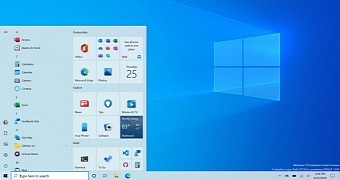Microsoft has officially launched the Windows 10 October 2020 Update, and the first wave of users can download it today by simply checking for updates manually on Windows Update.
Worth knowing, however, is that Microsoft is rolling out the new OS feature update to users in stages, so not everybody gets it on day one. In other words, even if you manually check for updates in Windows Update, you might still have to wait a few more days or weeks until the October 2020 Update shows up for you.
Microsoft explains that only those running Windows 10 version 1903 or later can download the October update today, but the available would be further expanded to more users and devices in the coming weeks. For now, however, the company just wants to make sure that everything is running as smoothly as possible for everybody.
“In this work, learn and connect from home environment where people are relying on their PCs more than ever before, we are taking a measured seeker-based rollout approach to the October 2020 Update. We are throttling availability over the coming weeks to ensure a reliable download experience, so the update may not be offered to you right away. Additionally, some devices might have a compatibility issue for which a safeguard hold is in place, so we will not offer the update until we are confident that you will have a good update experience,” Microsoft says.
In case you’re wondering whether or not your system is capable of running Windows 10 October 2020 Update, then the answer is as simple as it could be. If your computer is already running Windows 10, then it should be able to cope with the October update just fine. If it doesn’t, this is probably the reason you’re reading this article in the first place.
The biggest change for the October 2020 Update, as WinAero noticed, concerns the storage space, as Windows 10 now requires at least 32GB of storage for both 32-bit and 64-bit versions of the operating system. Everything else is unchanged from the previous Windows 10 releases, and this is why the October 2020 Update should run just flawlessly on any device where Windows 10 is already installed.
These are the system requirements for Windows 10 October 2020 Update:
- Processor: 1 gigahertz (GHz) or faster processor or SoC
- RAM: 1 gigabyte (GB) for 32-bit or 2 GB for 64-bit
- Hard disk space: 32 GB for both 64-bit and 32-bit OS
- Graphics card: DirectX 9 or later
- Display resolution: 800 x 600, a minimum diagonal display size for the primary display of 7-inches or larger.
Needless to say, if you upgrade from an older version of Windows, such as Windows 7, you’re going to need some hardware improvements too, especially if you want to get the full feature pack. However, these aren’t specific for Windows 10 October 2020 Update, as they were required for the previous versions of the operating system too.
For example, if you want to enable Windows Hello facial recognition on the device, you’re going to need a special camera that works with this feature – and the same for fingerprint sensors, though such hardware worked on Windows 7 too, only that it wasn’t part of Windows Hello.
At the end of the day, pretty much any device already running Windows 10 should be able to upgrade to the October 2020 Update just fine. The new version shows up on Windows Update when it’s ready for your computer and should then install in just a few minutes.

 14 DAY TRIAL //
14 DAY TRIAL //